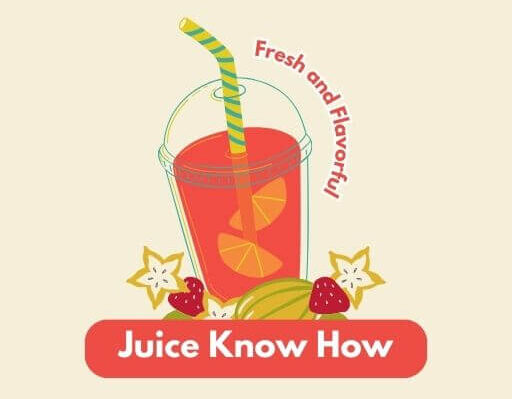Have you ever found yourself in the middle of a recipe, the ingredients all lined up, only to be stumped by the vague instruction: “juice of one lemon”? It’s a common culinary conundrum that can leave even seasoned cooks scratching their heads. How much juice are we really talking about? And more specifically, how many teaspoons of that liquid gold can you expect to squeeze from a single lemon?
In this article, we’ll dive deep into the juicy world of lemons, exploring the factors that influence their juice yield and providing you with the knowledge to confidently conquer any recipe that calls for this vibrant ingredient. Get ready to unlock the zesty secret!
The Average Lemon: A Teaspoon Calculation
Let’s cut to the chase: on average, a medium-sized lemon contains approximately 9 to 12 teaspoons of juice. That’s roughly 3 to 4 tablespoons. However, before you start stocking up on lemons, it’s important to understand that this is just an estimate. The actual amount of juice can vary depending on several factors, including the size and variety of the lemon, as well as how effectively you extract the juice.
Factors Affecting Lemon Juice Yield
Lemon Size
Size matters when it comes to juice yield. A small lemon will naturally contain less juice than a large one. Here’s a general guideline:
- Small Lemon: 6-9 teaspoons (2-3 tablespoons)
- Medium Lemon: 9-12 teaspoons (3-4 tablespoons)
- Large Lemon: 12-15 teaspoons (4-5 tablespoons)
Lemon Variety
Different lemon varieties have different juice content. For example, Meyer lemons are known for their thin skin and abundant juice, while other varieties may be drier.
Ripeness
A ripe lemon will yield more juice than an unripe one. Look for lemons that are heavy for their size and have a vibrant yellow color.
Juicing Technique
The way you juice a lemon can also impact the amount of juice you extract. Simply squeezing with your hands won’t cut it. To maximize juice extraction, consider these methods:
- Reaming: Use a reamer, a special tool with a pointy, ridged shape, to extract the juice.
- Juice Press: A juice press will flatten the fruit to push out all the juice.
- Spoon Technique: If you don’t have a fancy tool, you can use a kitchen spoon. Cut the lemon in half, and use the spoon to ream the lemon.
Getting the Most Juice Out of Your Lemon
Want to squeeze every last drop of goodness from your lemons? Here are some handy tips:
- Room Temperature: Bring lemons to room temperature before juicing. This softens the fruit and makes it easier to extract the juice.
- Roll It: Roll the lemon on a countertop before cutting it open. This helps to break down the membranes inside, releasing more juice.
- Cut Properly: Cut the lemon lengthwise instead of crosswise. This allows you to access more of the juice-filled segments.
- Apply Pressure: When using a reamer or juice press, apply firm and even pressure to extract as much juice as possible.
- Don’t Forget the Zest: If your recipe calls for lemon zest, zest the lemon before juicing it. It’s much easier to zest a firm lemon than a squeezed one.
Lemon Juice Conversions: A Handy Guide
To make your cooking and baking adventures even easier, here’s a quick conversion guide for lemon juice:
- 1/2 lemon ≈ 4 1/2 to 6 teaspoons (1 1/2 to 2 tablespoons)
- 1 small lemon ≈ 6 to 9 teaspoons (2 to 3 tablespoons)
- 1 medium lemon ≈ 9 to 12 teaspoons (3 to 4 tablespoons)
- 1 large lemon ≈ 12 to 15 teaspoons (4 to 5 tablespoons)
- 1/4 cup lemon juice ≈ 1 1/4 lemons
- 1/2 cup lemon juice ≈ 2 1/2 lemons
- 3/4 cup lemon juice ≈ 4 lemons
- 1 cup lemon juice ≈ 5 1/4 – 5 1/2 lemons
*Note: These are approximations, and the actual amount may vary*.
Bottled vs. Fresh Lemon Juice: Is There a Difference?
While bottled lemon juice is convenient, fresh lemon juice offers a superior flavor that can elevate your dishes. Freshly squeezed lemon juice has a brighter, more vibrant taste compared to the often metallic or bitter flavor of the bottled stuff. Plus, you can use the lemon zest for an extra layer of flavor!
Beyond the Recipe: Other Uses for Lemon Juice
Lemon juice isn’t just for culinary creations. It’s a versatile ingredient with a wide range of uses, including:
- Cleaning: Lemon juice is a natural cleaning agent that can be used to disinfect surfaces, remove stains, and deodorize your home.
- Beauty: Lemon juice can brighten skin, lighten dark spots, and strengthen nails.
- Health: Lemon juice is a good source of vitamin C and antioxidants, which can boost your immune system and protect against disease.
Now You Know
So, the next time a recipe calls for the juice of one lemon, you’ll be armed with the knowledge to confidently tackle the task. Remember, the average lemon yields around 9 to 12 teaspoons of juice, but factors like size, variety, and juicing technique can all play a role. With a little practice and these helpful tips, you’ll be a lemon-juicing pro in no time!
